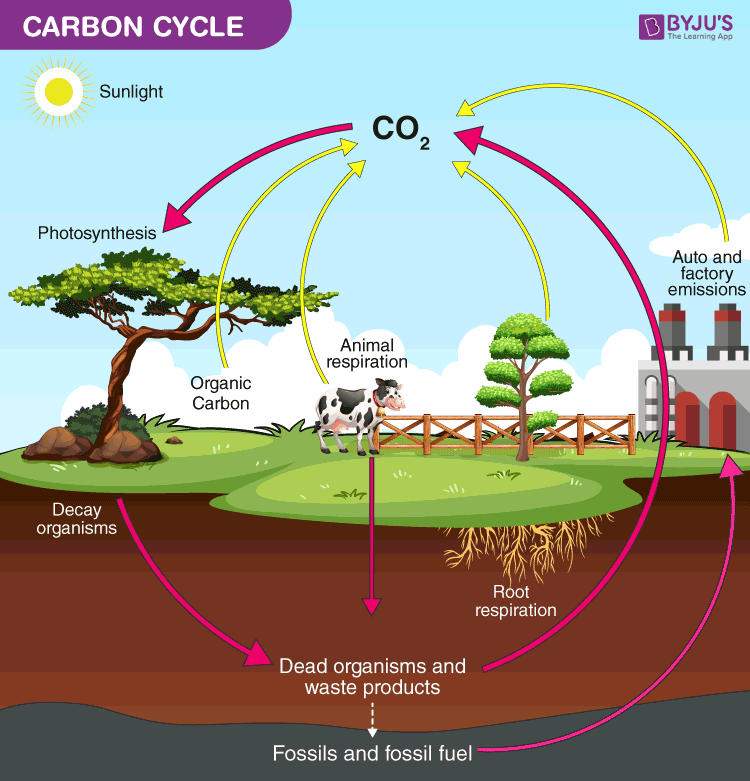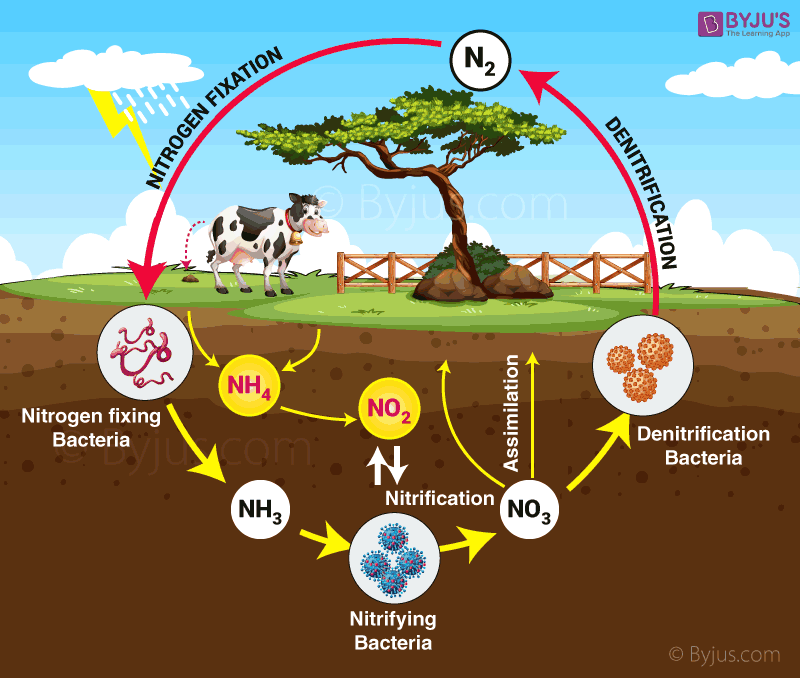Back to: BIOLOGY SS1
Welcome to class!
In today’s class, we will be talking about the nutrient cycle in nature. Enjoy the class!
Nutrient Cycle in Nature

Nutrient Cycle is the movement and exchange of organic and inorganic substances from the earth to the atmosphere and back to the earth. Valuable elements such as carbon, oxygen, hydrogen, phosphorus, and nitrogen are essential to life and must be recycled for organisms to exist.
Carbon cycle
The carbon cycle is the circulation of carbon in various forms through nature. Carbon is a constituent of all organic compounds, many of which are essential to life on Earth. Carbon is essential to all life as it is the main constituent of living organisms. It serves as the backbone component for all organic polymers, including carbohydrates, proteins, and lipids.

Processes involved in the carbon cycle
- Photosynthesis
- Volcanic eruption
- Respiration
- Combustion/burning
- Decay/decomposition.
Description of the carbon cycle
- CO2 is removed from the atmosphere by photosynthetic organisms (plants, cyanobacteria, etc.) and used to generate organic molecules and build biological mass.
- Animals consume the photosynthetic organisms and acquire the carbon stored within the producers.
- CO2 is returned to the atmosphere via respiration in all living organisms.
- Decomposers break down dead and decaying organic matter and release CO2.
- Some CO2 is returned to the atmosphere via the burning of organic matter (forest fires).
CO2 trapped in rock or fossil fuels can be returned to the atmosphere via erosion, volcanic eruptions, or fossil fuel combustion.;
Nitrogen cycle
Similar to carbon, nitrogen is a necessary component of biological molecules. Some of these molecules include amino acids and nucleic acids. Although nitrogen (N2) is abundant in the atmosphere, most living organisms can not use nitrogen in this form to synthesize organic compounds. Atmospheric nitrogen must first be fixed, or converted to ammonia (NH3) by certain bacteria. This is achieved in the Nitrogen cycle.

Steps of the nitrogen cycle
- Atmospheric nitrogen is converted to ammonia (NH3) by nitrogen-fixing bacteria in aquatic and soil environments. These organisms use nitrogen to synthesize the biological molecules they need to survive.
- Ammonia (NH3) is subsequently converted to nitrite and nitrate by bacteria known as nitrifying bacteria.
- Plants obtain nitrogen from the soil by absorbing ammonium (NH4-) and nitrate through their roots. Nitrate and ammonium are used to produce organic compounds.
- Nitrogen in its organic form is obtained by animals when they consume plants or animals.
- Decomposers return NH3 to the soil by decomposing solid waste and dead or decaying matter.
- Nitrifying bacteria convert NH3 to nitrite and nitrate.
- Denitrifying bacteria convert nitrite and nitrate to N2, releasing N2 back into the atmosphere.
Oxygen cycle
Oxygen is an element that is essential to biological organisms. The vast majority of atmospheric oxygen is derived from photosynthesis. The oxygen cycle elaborates how oxygen circulates in various forms through nature.

Processes involved in the oxygen cycle
- Respiration
- Combustion
- Decomposition
- Rusting
- Photosynthesis
- Sunlight
Water cycle
The water cycle describes the continuous movement of water from the atmosphere to the earth and back to the atmosphere.

Processes of the water cycle
- Evaporation
- Transpiration
- Sweating/perspiration
- Condensation
- Precipitation/rainfall
- Percolation
- Respiration by plants/animals;
- Surface run-off/erosion;
- Excretion by plants/animals;
- The decay of plants/animals;
- Absorption of water by root hairs;
In our next class, we will be talking about Nutrition in Animals. We hope you enjoyed the class.
Should you have any further question, feel free to ask in the comment section below and trust us to respond as soon as possible.

Wow so great